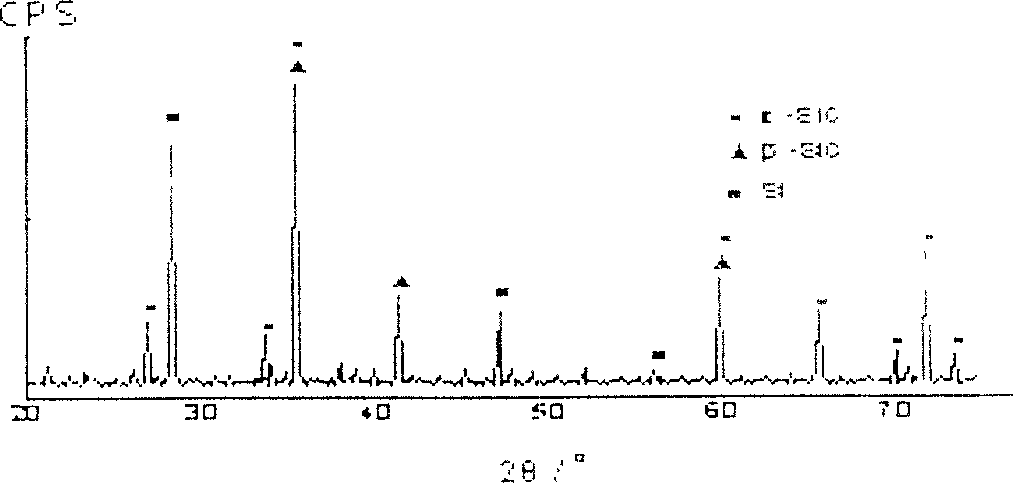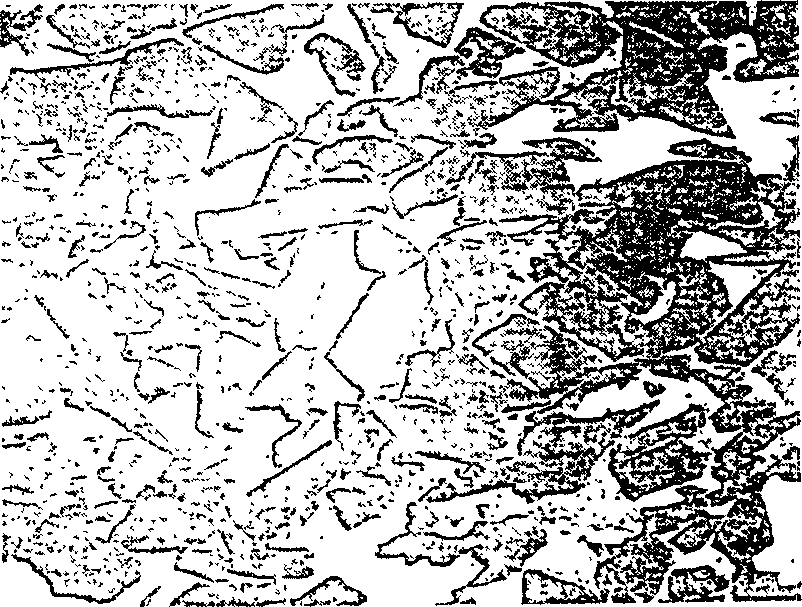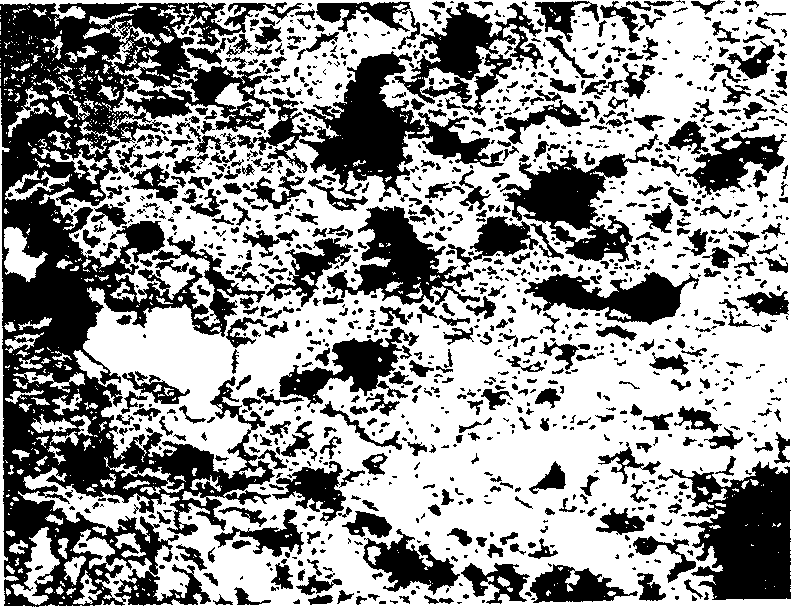Method for producing cold end part of silicon carbide heating element
A technology of heating element and manufacturing method, applied in the field of silicon carbide ceramic materials, can solve the problems of high material consumption and energy consumption, technical difficulty in process, and high residual carbon content
- Summary
- Abstract
- Description
- Claims
- Application Information
AI Technical Summary
Problems solved by technology
Method used
Image
Examples
Embodiment 1
[0034] Step 1: Put silicon carbide powder with a particle size of 30 mesh, a mass fraction of 0.35, a particle size of 80 mesh, and a mass fraction of 0.25, petroleum coke powder with a mass fraction of 0.20, graphite powder of 0.10, and silicon powder of 0.10 in a mixer Upmixing for 0.5 hours;
[0035] Step 2: Add alcohol-soluble phenolic resin, organic plasticizer and ethanol with a mass fraction of 0.12 to the above-mentioned homogeneously mixed powder, and roll on a wheel mill for 1 hour;
[0036] Step 3: Break the rolling material into blocks, and place it at room temperature to dry;
[0037] Step 4: Crushing and crushing the dried raw materials, passing through an 8-mesh sieve to granulate, and set aside;
[0038] Step 5: Add the raw materials to be used into water-soluble phenolic resin with a mass fraction of 0.15, and mix and grind for 30 minutes;
[0039] Step 6: Seal the mixed and milled raw materials and place them for 6 hours;
[0040] Step 7: Extrude a φ25mm s...
Embodiment 2
[0046] Step 1: Mix silicon carbide powder with a particle size of 60 mesh and a mass fraction of 0.65, petroleum coke powder with a mass fraction of 0.20, graphite powder with a mass fraction of 0.05, and silicon powder with a mass fraction of 0.10 on a mixer for 0.5 hours;
[0047] Step 2: Add alcohol-soluble phenolic resin, organic plasticizer and ethanol with a mass fraction of 0.12 to the above-mentioned homogeneously mixed powder, and roll on a wheel mill for 1 hour;
[0048] Step 3: Break the rolling material into blocks, and place it at room temperature to dry;
[0049] Step 4: Crushing and crushing the dried raw materials, passing through an 8-mesh sieve to granulate, and set aside;
[0050] Step 5: Add the raw materials to be used into water-soluble phenolic resin with a mass fraction of 0.15, mix and grind for 30 minutes and then seal;
[0051] Step 6: Seal the mixed and milled raw materials and place them for 12 hours;
[0052] Step 7: Extrude a φ25mm shaped green b...
Embodiment 3
[0058] Step 1: Mix silicon carbide powder with a particle size of 120 mesh, a mass fraction of 0.60, a particle size of 180 mesh, and a mass fraction of 0.25, petroleum coke powder with a mass fraction of 0.1, and activated carbon powder of 0.05 on a mixer for 0.5 hours;
[0059] Step 2: Add alcohol-soluble phenolic resin, organic plasticizer and ethanol with a mass fraction of 0.1 to the above-mentioned homogeneously mixed powder, and roll on a wheel mill for 1 hour;
[0060] Step 3: Break the rolling material into blocks, and place it at room temperature to dry;
[0061] Step 4: Crushing and crushing the dried raw materials, passing through a 40-mesh sieve to granulate, and set aside;
[0062] Step 5: Add the raw materials to be used into water-soluble phenolic resin with a mass fraction of 0.08, and mix and grind for 30 minutes;
[0063] Step 6: Seal the mixed and milled raw materials and place them for 24 hours;
[0064] Step 7: Extrude a φ25mm shaped green body on a scr...
PUM
| Property | Measurement | Unit |
|---|---|---|
| porosity | aaaaa | aaaaa |
Abstract
Description
Claims
Application Information
 Login to View More
Login to View More - R&D
- Intellectual Property
- Life Sciences
- Materials
- Tech Scout
- Unparalleled Data Quality
- Higher Quality Content
- 60% Fewer Hallucinations
Browse by: Latest US Patents, China's latest patents, Technical Efficacy Thesaurus, Application Domain, Technology Topic, Popular Technical Reports.
© 2025 PatSnap. All rights reserved.Legal|Privacy policy|Modern Slavery Act Transparency Statement|Sitemap|About US| Contact US: help@patsnap.com



